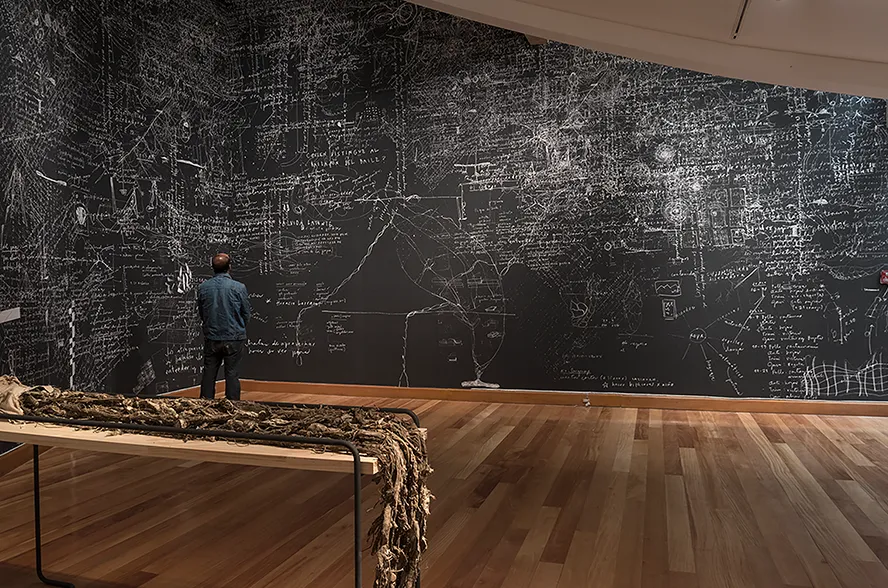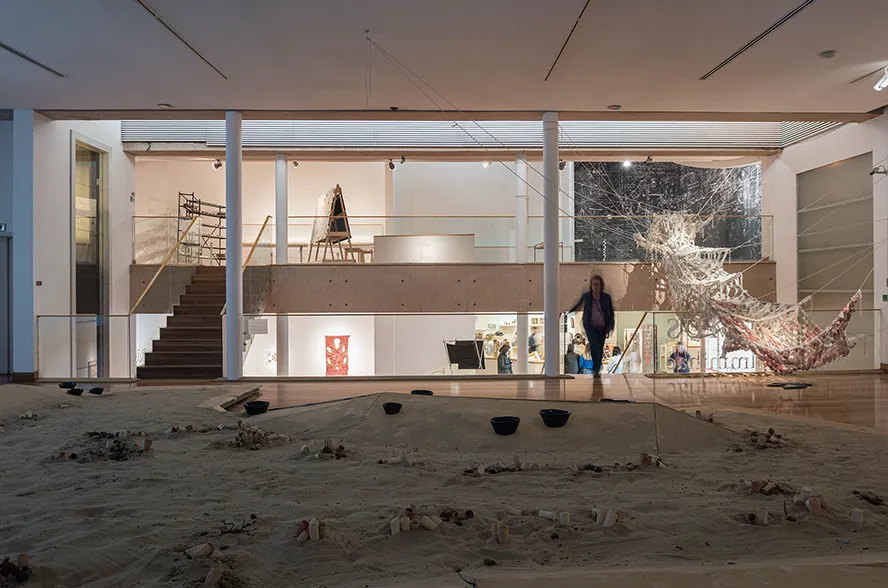Humus (2018)
HUMUS was an exhibition I imagined as an environment—not a series of isolated works, but a network of materials, processes, and thoughts in constant transformation. Its starting point was humus itself: the fertile layer of soil created through organic decomposition. I was interested in working with that logic—contaminating media, mixing scales, letting ideas decompose and regenerate meaning.
Leer más...
The project took shape in four scenes distributed across the MAVI: The Beach, The Miniatures Room, The Notebook Pages, and The Medusa Room. Each offered a way of entering the creative process, understood as a cycle that doesn’t always culminate in a finished work, but often lingers in trial, error, drift, or rehearsal.
In The Beach, I installed an irregular structure covered in sand with ceramic vessels—cups, bowls, water containers—and a silent projection that immersed the space in a floating visual and sonic atmosphere. I conceived it as a sensory threshold, a place where visitors could settle into the landscape and be affected by what is not immediately visible.
The Miniatures Room featured a series of studio models—small works that test forms, organize ideas, and allow for direct experimentation by hand. Many acted as early versions of past projects, mental maps, or remnants of ongoing processes.
The Notebook Pages became a large double-sided blackboard. On its surface, annotations, drawings, and fragments of text were dismantled and recombined again and again. I’m interested in treating the notebook as a non-hierarchical space of thought, where the domestic, the artistic, the theoretical, and the sensory coexist.
Finally, The Medusa Room presented a soft clay sculpture molded from my own head, extending into the space with hanging textiles and tentacle-like forms. Facing a large wall drawing composed of superimposed notebook pages, I wanted the medusa to appear as a thinking organ—a pre-verbal presence that communicates through movement, vibration, and contact.
HUMUS was also a way of reimagining the exhibition as a learning process, as expanded pedagogy. The logic of humus—contagion, mixture, dissolution—stands in contrast to the rigidity of the traditional museum. In this sense, the show sought to open toward a critical ecology: a porous artistic practice that welcomes residue, error, and living materials as part of its politics.
More than a retrospective or a closed installation, HUMUS was a commitment to work-in-progress, to the larval forms of thought, to an art that folds, adapts, and re-emerges in new contexts.

